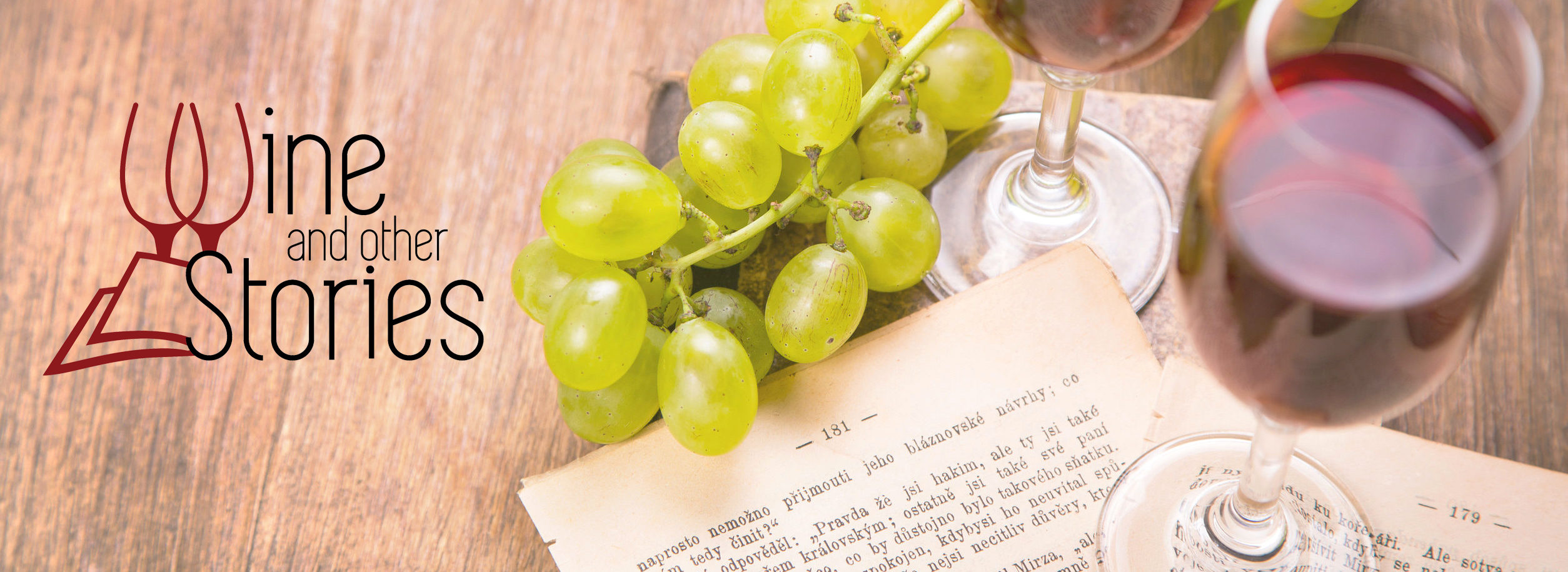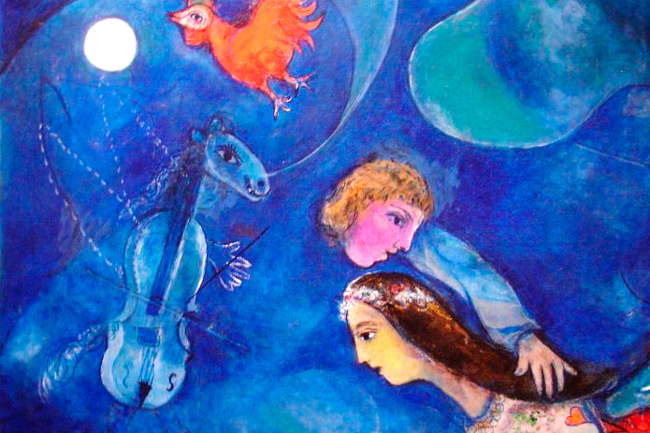A hot summer day in Rome. A missed appointment. A Chagall painting. And a wine. These are the ingredients of the genesis of the most popular and iconic Italian song: Volare by Domenico Modugno. Here’s (more or less) how it went
Leaning against the Fontana dell’Obelisco, in the middle of Piazza del Popolo, Franco used a handkerchief to wipe the sweat off his forehead again. Somehow he had managed to find a tiny shaded place on that heated Sunday. July in Rome can be scorching hot.
He’s not coming. Franco glanced at the children happily playing with water in the nearby fountain. They didn’t seem to care about the heat of the day. Franco stared at his watch. It was almost midday. The thought pinged back and forth in his mind. He’s not coming.
Franco was infuriated with himself. How could he have trusted that man? Yes, he was generous and friendly, but also rather capricious. And definitely unreliable. He had been waiting for him for over two hours now… A length of time that seemed interminable in that stone and tarred hell of a summer day.
It was so humid, the air felt heavy. Despite Franco’s irritation, he found it impossible to move fast. Instead, he sluggishly paced from one end of the square to the other. Maybe the guy he was waiting for had stopped in another remote corner of that enormous Piazza. But Franco knew his attempt was in vain. He‘s not coming.
The man Franco was (at that point unconvincingly) waiting for was called Domenico. A relatively famous singer and actor. A rising star in the Italian television, Domenico was an energetic man from the South of Italy. He also happened to be hopelessly erratic.

Domenico had promised to pick up Franco at ten o’clock in Piazza del Popolo that Sunday. The plan was to go to the beach in Fregene, a leisurely one hour drive from the capital.
Franco was picturing the dark sand and the frothy water at the shore when his thoughts were jarred by the clamour of bells. It was midday. He was definitely not coming.
Franco looked down at his feet and curled and released his toes. It was almost therapeutic to direct his annoyance towards the extremities of his body. So far, wrinkling his toes was the least sweaty thing he had done while waiting for Domenico.
For a few seconds, he considered different courses of action in his mind. He could yell into the square like a neanderthal ‐ not directing his ire to any particular person. No. He might be carted away and that wouldn’t be satisfying. What if he punched some random person near him. But he would need to instantly run away towards Via del Corso. No – that was a stupid idea. Enough was enough he thought as resolutely folded his jacket. Making a sharp about turn, he started the long walk back to his home.
Franco was fuming. Despite his promises, Domenico had stood him up. His inconsistency had caused him to be charbroiled in that damned piazza. How inconsiderate. He was probably with his wife. To hell with him. Franco had had enough of these celebrities and their frivolous behaviour.
When Franco arrived home, the apartment was in complete darkness and painfully warm. He stumbled over some things on the floor before managing to open the kitchen window. With a sigh, he collapsed onto one of the small chairs surrounding the battered dining table. Franco could hear the swallows shrieking outside and the occasional vespa motorbike rambling down the street. Anger, disappointment, frustration and a shot of low self-esteem rearranged themselves into a dull kaleidoscope inside Franco.
Too flushed and disheartened to eat, Franco did the only thing he really fancied. He staggered the few steps to the fridge and opened the door. For a few seconds, he closed his eyes as he enjoyed the fresh air pumping out of the cold box. Momentarily refreshed, Franco grabbed the bottle of wine that he had been saving for a special occasion. Screw it! After the day he had just had, such self restraint was out of the window. Rummaging inside the semi-dark kitchen, Franco found a corkscrew and a glass and dropped his sweaty body onto the sagging sofa. He then poured himself a drink. After a quick toast (or more accurately curse) to the absent Domenico, Franco gulped down the wine. Within a time that would have been considered uncivilised for the Italian standard, he had finished the bottle. Feeling the wine sloshing around in his stomach, he collapsed into a dreamless sleep.

When Franco next opened his eyes, he had lost track of time. He asked in a low mutter “How long did I sleep?”. It could have been a few minutes, but more likely a couple of hours. It was difficult to gauge time passed in that burning summer heat. Not that he yearned for an answer. In Franco’s dazed state, confusing thoughts tumbled through the feeble space between dreams and wakefulness.
Suddenly, Franco realised he was staring at the two Chagall prints hung in front of him. The afternoon light peeking through the semi-closed shutters animated the colourful prints. The different shades of blue felt vivid and alive.
As he focused on the prints, words started to spark in Franco’s mind like shooting stars on a clear August night. Without breaking his stare, he gradually sat up straight on the sofa. His eyes flickering from the sea of blue captured so beautifully in the composition to the violin and oniric human figures envisioned by Marc Chagall. In a triumphant wave, the following lyrics flooded Franco’s consciousness:
Mi dipingevo le mani e la faccia di blu, poi d’improvviso venivo dal vento rapito, e incominciavo a volare nel cielo infinito
[I painted my hands and my face blue, then suddenly I was ravished by the wind, and I started flying in the infinite sky]
In that moment, Nel blu dipinto di blu (better known as Volare), one of Italy’s most iconic songs was born. One year later, in 1958, Volare was released. The song became an instant success in Italy and around the world. In Italy, Volare sold more than 20,000 copies in its first 12 days. While in the US, it climbed to number 2 of the Billboard Hot 100.
I might have romanticised the story, but according to the Italian songwriter Franco Migliacci that’s how the famous Italian song Volare was conceived. Franco had moved to Rome to seek his fortune. There he met Domenico Modugno, an energetic and charismatic Southern Italian singer. The two decided to collaborate on a new song. Since it was summer, they decided that the Italian creative flow would be lubricated by a day on the beach. But Domenico never kept his promise. Franco, infuriated at being abandoned, went home alone and drank an entire bottle of wine by himself. Then he fell asleep. Franco woke to the sight of two prints by Marc Chagall. The first words of Volare’s lyrics magically materialised on his lips.
Did that print of Marc Chagall’s La Coq Rouge inspire Franco Migliacci’s iconic song? I have no doubt that the intense blueness displayed in the piece, as well as the visionary and oneiric nature of the Russian-French artist would certainly have affected Franco.

But what about the wine? Could the beverage sipped just before Franco’s stupor have been an essential ingredient in the conception of this masterpiece? I believe so!
I’ve been wondering, since I started writing this article, what kind of wine could have imbued Volare. If you listen to the melody, or read its lyrics, you will certainly grasp the energetic and explosive nature of the song. It combines the dreamlike feeling of a Chagall painting with the poetry and lightness of the best Italian popular music. While its singer, Domenico Modugno, brings the characteristic warmth of a Southern Italian man.
The Italian song Volare is about liberation and the hope of a new beginning. It’s also a celebration of fresh oneiric energy. An explosive mixture of summer flavours and extrovert rhythms. I tried to pick an Italian wine with similar characteristics. Many examples would fit the description, but the first great Southern Italian white wine that occurred to me was Fiorduva Furore Bianco by Marisa Cuomo.

Marisa Cuomo - Fiorduva Furore Bianco, 2017

 Country: Italy
Region/appellation: Campania - Costa d'Amalfi DOC
Wine style: Dry white - Tropical and Balanced
Grape(s): 40% Ripoli, 30% Fenile, 30% Ginestra
Average price: £52
Country: Italy
Region/appellation: Campania - Costa d'Amalfi DOC
Wine style: Dry white - Tropical and Balanced
Grape(s): 40% Ripoli, 30% Fenile, 30% Ginestra
Average price: £52
Marisa Cuomo and Andrea Ferraioli first founded the winery in 1980. Today, its vineyards stretch for 10 hectares in the beautiful landscape of the Amalfi Coast, in the Southern Italian region of Campania.
Marisa Cuomo’s viticultural efforts are heroic as this winemaker overcame the challenges of a peculiar geography. The vineyards cling to steep dolomitic rocks 500m above sea level. Some of the cliffs are almost vertical. Manual labour is the only choice is such an extreme environment.
Sun and sea are the magical ingredients of this stretch of heaven and both affect the wine produced therein. The sun contributes to richness and ripeness, while the sea mitigates the warm temperatures of this location and gives a lovely freshness with its maritime breezes.
Marisa Cuomo is devoted to the local grape varieties of Campania. This “Fiorduva” is a blend of native grapes unheard of elsewhere. All exhibit exceptional quality. Fenile has high sugar content and provides a bright colour. Beyond having a fresh acidity, ginestra is more aromatic and confers aromas of broom and acacia. Another native grape, ripoli gives perfumed honeyed nuances. The fruit used for Fiorduva is the best available in the estate. The grape bunches are picked when they are very ripe. After a soft pressing, fermentation starts in oak barriques, where the liquid is kept for about three months. The wine is then matured for four months in stainless steel tanks before being bottled.
Tasting notes
(tasted on: 10-Apr-2019)
In the glass the wine has a bright lemon hue, pale in intensity. On the nose it opens up with exceptional richness and extrovert flavours. Succulent white peach and apricot notes mingle with tropical nuances of mango and pineapple. Lovely floral aromas are also present. In particular, honeysuckle, acacia flowers and orange blossom. Candied lemon and a subtle nuttiness linger in the background. Hints of a saline minerality reveal the proximity to the sea.
On the palate, the wine is full in body with a dense yet refined texture. From the first sip, the wine’s perfume and complexity are revealed. Aromas of yellow peach, fleshy apricot and tropical fruit complement flowery nuances. A laser-sharp acidity harmonises the rich aromatic profile, contributing to a great tension and precision. The wine graciously evolves in the mouth, revealing subtle notes of toast and nuts in the mid-palate. Pronounced in intensity of flavours, this rich white is both elegant and energetic. The long finish verges towards stone fruit and acacia notes. Complex and extrovert, all components are beautifully integrated. An outstanding wine from a blessed country.
Wine and other Stories rating: 9.5/10


What a unbelievable story that then leads to a ‘Fabulous Song for All Time.’
You just can’t make this stuff up. Why hasn’t anyone made a movie about the creation of Volare’!!!